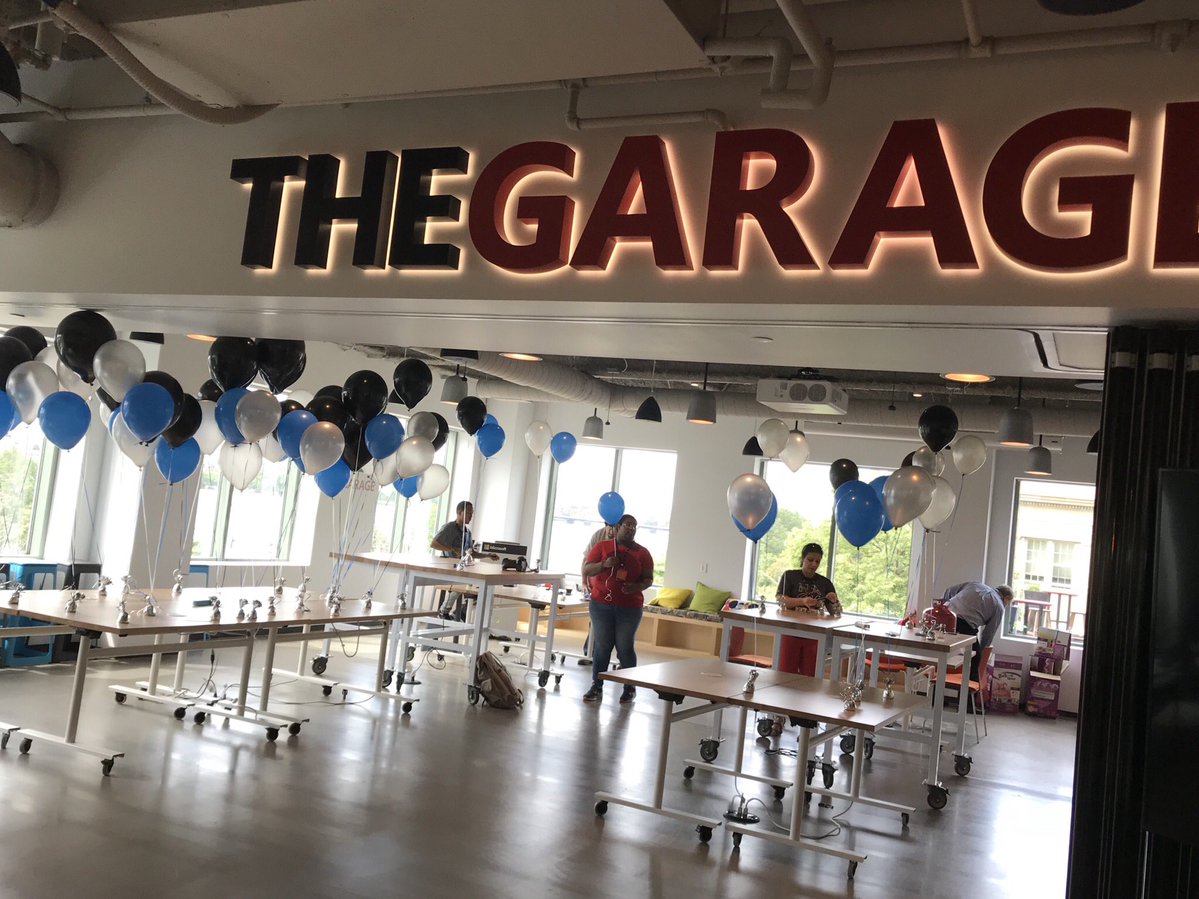Microsoft Employees Build Middle School Curriculum using Escape Room Concept
From July 23-26, the Garage at Microsoft’s New England Research & Development (NERD) Center held its annual OneWeek Hackathon, an event that takes on new challenges and innovations brought by employees. Ideas are explored, hacked, and created—ideas that could potentially change the world.
The OneWeek Hackathon (fondly known as just “Hackathon”,) now in its fifth year, has a history of producing future Microsoft products or successful ongoing Garage projects. Curious about what exactly makes a Hackathon project? With more than 200 participants from NERD alone, it’s impossible to cover every amazing hack, but to give a look into the type of brilliant projects that go on over the course of three days, here’s a look inside one project that was popular this year: “Engineering Escape Rooms Curriculum.”
Earning the “Pass the Torch” award during NERD’s Science Fair following Hackathon due to its potential for future success, Engineering Escape Rooms Curriculum will be implemented as a course for middle school students to work on over the course of 10 weeks in the fall. While the project was designed prior to Hackathon, the week provided an opportunity for a new team to refine the project.
Escape rooms are a popular puzzle-solving physical adventure where groups of players are given brain teasers and riddles to solve within an enclosed room. The goal is to win, or “escape,” in 60 minutes or less using strategy and clues. To present computer and digital learning in an escape room fashion to middle schoolers is how the hack team idealized the project’s completion.
“We can explicitly explain decomposition to them, bottle it, and then show them how we make the escape room and break it down into puzzles, and solve the problem that way,” explained Eric Jewart, software engineering manager.
Entered under the “Hack for Good” Hackathon challenge, one of the purposes of the project was to use technology to help nonprofits achieve new heights. The team had a great passion about the education system in the Boston area and sought a way to improve it.
“Twelve years ago, the Massachusetts Department of Education created a new set of standards for computer science and digital literacy,” said Jewart. “A lot of the content in these standards is brand new, so teachers and districts need help figuring out how they can integrate these ideas in their teachings.”
This is where the curriculum is a perfect fit. One of the challenging areas with the project was figuring out how to create problems that middle schoolers can conceptualize and solve by looking at things in a different way.
“One of the standards in the computational thinking strand asks students to collaboratively decompose a problem and creative a sub-solution for each of their parts,” said Jewart. “This is exactly what we’re doing with the escape room; giving them one big problem and helping them break it down into manageable chunks.”
The project team recognized that they could use their background in computer science to create a like-minded course in tandem with teachers in the community to assist with bringing the highest growth potential out of students.
“This kind of decomposition is second nature to what we do in the field of computer science all the time,” Jewart said. “But despite how well it works for some big problems, across all walks of life, it’s not always obvious for middle schoolers how they can use this strategy to prevent themselves from being overwhelmed from one big problem.”
Bringing in local teachers during Hackathon helped the course’s specific design focus and explanation when being taught. The team wanted to make sure the assistance they received would be one with the students in mind—as well as the instructors teaching them. The teachers can go back to their schools and integrate these ideas into their everyday teaching.
The spirit of exploration was running high with the small team of 10. At the Hackathon’s wrap-up science fair, attendees were able to test out the curriculum with its Hackathon improvements. Going forward, team members will work to improve the project, so the curriculum will be ready to teach by the fall.
For more Hackathon highlights, click here.

